#historical research
Text
Want to see a cool research thing? It's a collection of digitized menus from the 1800/1900s at the New York Public Library.
Perfect for my historical fiction peeps or culinary historians
301 notes
·
View notes
Text
FitzLetters Book (future publication)
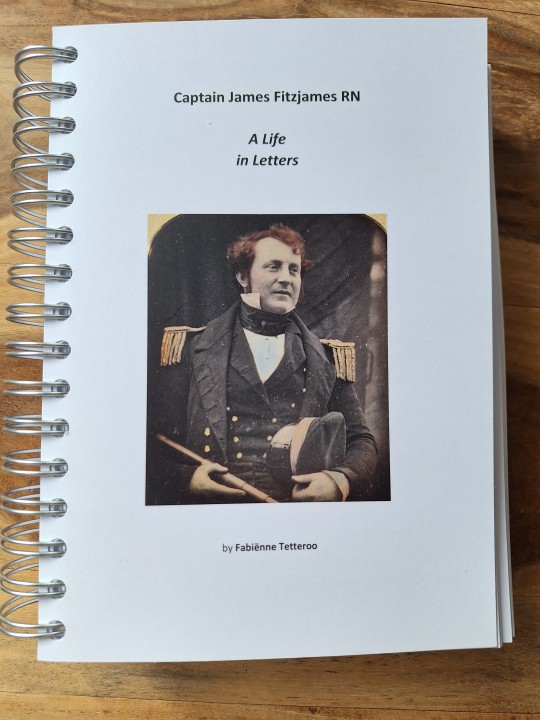
And of course there's this beast of a book: Fitzjames' correspondence 1825-1845! First had it printed back in 2022 but now had it printed again after corrections & adding more letters. There's no text of mine/footnotes yet. More editing to do first. I have a different idea for the cover but this looks nice for now. ❤️
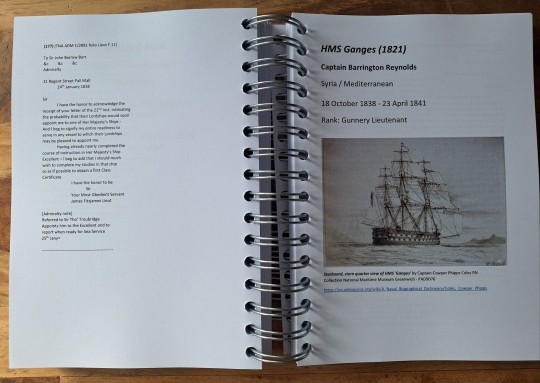
The letters are divided by the ships Fitzjames served on. A treasure trove of information, not just about Fitzjames but also early 19th century (naval) history. Over 550 pages! I typed all of this. 😵💫 Will also find a publisher for this after finishing the Fitzjames biography by the end of this year, hopefully!
#james fitzjames#royal navy#franklin expedition#naval history#age of sail#book publishing#historical research
78 notes
·
View notes
Text

Maybe I should make a "handsome samurai of the week" column? 🤔
Here we have Obata Tokujiro, on the left, and Matsuyama Toan, on the right, photographed in the late Edo period.
Obata Tokujiro was a teacher of both English and science at Kaiseijo, a school of Western learning in Edo, which was one of the forerunners of what is now Tokyo University. During the Meiji period he traveled both Europe and the United States before returning to Japan, and he later became head of Keio University.
Matsuyama Toan was a doctor, head of Keio University School of Medicine, founder of Tokyo Jikei University School of Medicine, and translator of the first English-language medical book published in Japan, among other things.
#history notes#historical notes#history reference#historical reference#history research#historical research#photos#portraits#samurai#Edo period#late Edo period#Bakumatsu period#handsome samurai
120 notes
·
View notes
Text
*stumbles upon @jstor article about lesbian bars in Belle Epoque Paris that leads to other JSTOR articles in the sources*
JSTOR you are my favorite and I love you forever that is all.
(Here’s the article if anyone else is curious.)
#historical research#why yes I did write a lot of fanfic set in a Paris Exposition and now I'm writing a novel set in one what of it#Gay Paree
652 notes
·
View notes
Text

It do be like that sometimes
104 notes
·
View notes
Note
Hi again!! What's your opinion of people drawing/writing Amina (and her mother and sisters, for that matter) wearing a hijab? Thanks :)
Oh this is interesting!!
Okay, so I have two answers. One is that as a fan, you can interact with a character however you want. If you want to imagine a hijabi Amina, you are so welcome to do so - that version of her is yours, and it belongs to you. She stopped being my character alone when I published a book about her - we all share her now!
My second answer, though, is that in terms of historical accuracy, no, she most likely wouldn’t have worn the hijab. This was something that came up in my research, and that I found super fascinating. Obviously fashions were very different then, but also (as far as I understand, please know that I am not an expert on this) the way people expressed their faith was quite different. It wasn’t as usual for wealthy Egyptian Muslim women to wear the hijab - instead they tended to wear (among other things) this devastatingly cool little hat/scarf combo:
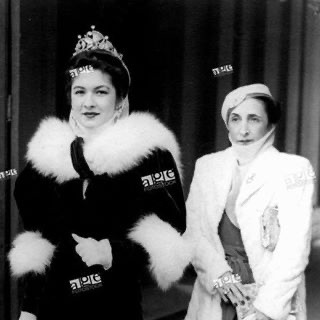

I actually went into creating Amina’s character intending her to be a hijabi and came out of it realising that she wouldn’t have worn the hijab! (NB - again, please note that I’m sure some wealthy women did, and also that I think it was more common for working class women to do so. I’m not making any absolute statements here!)
While I’m on the subject of Egyptian women in the 1930s, I remember that I had to cut out a scene where Amina’s mother ran a women’s poetry/writing group. There was a real literary scene in Cairo in the 1930s, loads of women were published poets and writers and thinkers - it was really such an interesting time and I wish I’d been able to include more about that!
52 notes
·
View notes
Note
kinda random question but how do you go about researching? I’ve wanted to get deeper into fashion history than just watching youtube videos, but I don’t really know where to start.
ps. thanks for making such detailed posts. they’re really interesting to read.
Thank you! I'm really glad you've found my posts interesting!
This is great since I've kinda answered this in replies couple of times, but not properly. I very much understand the struggle. Dress history is a relatively new academic field and there's not that much reliable sources available and so so much unreliable sources everywhere. Internet of course has this problem but so does a lot of books too.
I thought this would be a short one and yet, here we are again.
Disclaimer: I'm writing this from a western fashion history perspective, since that's what I know best, but especially reading up on academic research and doing primary source research applies to non-western cultures too, though often it's harder to find sources for non-western fashion.
Getting started
Imo the best place to getting started is to read a book that gives a general timeline of fashion through history. I'm not sure if that's just how my brain works, but it helped me a lot of when going deeper into one period or another to understand the broader context and what roughly came before and what after. However these books are inherently difficult to make well, because there's so much nuance and variation in every period of dress history and if you're writing about the whole timeline through thousands of years and keeping it book length, there will need to be a lot of simplification to the point of inaccuracy. There's many popular fashion history timeline books with illustrations made for the book, but I would avoid those since non-contemporary illustrations often give a distorted image of the fashion, especially when it's about earlier periods in history. I've seen some really inaccurate illustrations depicting Middle Ages and Renaissance especially.
Costume and fashion: a concise history by James Laver - I'd recommend this as the starting point. James Laver was a art historian, an important pioneer of fashion history and curator of Victoria and Albert Museum, which has one of the most extensive costume collections now. The book is therefore based on serious academic study, but being a pioneer means you'll be outdated, when the field is more established, which is partly the case with this book. There's some outdated parts, but the images are primary sources and it does give good historical background. It should be taken as a starting point, not as the end point.
A History of Fashion by J. Anderson Black and Madge Garland - This is another similar book. It's more recent, but it also suffers from some outdated parts. The writers are not academics, but it has more primary source pictures which does help (at least me) understand visually what's being said.
Books
In a given subject I'm researching I usually start with seeing if I can find a reliable book on it or related to it, if I haven't already read much on it. Often what I want to research goes deeper into details than what a book usually does, so it will work as a starting point. As said it can be hard to find these books that are actually reliable, but here's couple of reading lists to help with it.
Here's a reading list by a retired professor of dress history from Helsinki University. It's very extensive and has a wide variety of books and papers listed. There's a bit of leaning towards Finnish sources, but most are in English and about more international western fashion.
Here's a reading list by @clove-pinks, who is excellent and writes a lot about the Romantic period, especially men's fashion here on Tumblr. These are all books that can be read free on Internet Archive, which makes the list even better.
Internet sources
There's a lot of bad sources floating around in the internet, but also some excellent gems. As dress history is such a new field, there's a lot of unexplored spots and lacking research still, but some troopers in the internet have done some great legwork in going through primary sources and gathering them together. These can be excellent especially when trying to research a specific garment, since often these blog posts are by historical costumers, who are detailing their background research in reconstructing a specific garment. It's not always easy to find them, since they might not come up in the first page of the google search, but I often find them through pinterest, where the blogs are linked into the primary source images and images of the reconstructed garments. Though be sure to look with blogs like that with critical eye. The best sign that it's reliable is when each image is given a source.
There's some more general sources too that need to be taken with a grain of salt.
Fashion History Timeline - This is a page with entries to the whole timeline of fashion as well as entries of specific garments. It's very well sourced and has usually pretty good image sources too. I will say though that it often gives a pretty limited description of the period focusing on some specifics, without giving a good overall picture, especially in the Medieval sections. The medieval sections are honestly pretty useless. It's at it's best in 19th century imo (I haven't checked out the entries to 20th century since I rarely research vintage styles, but I'd assume they are pretty good too). But since it has great sourcing it is usually informative. It just shouldn't be relied upon to give full picture of a period.
Wikipedia, History of Western fashion - In some ways this is the opposite of Fashion History Timeline. Wikipedia has articles on each period. The sourcing on these articles is often quite lacking and the information shouldn't be taken at face value. Especially the terms for the garments are often used in these articles in very questionable ways. However what these articles have is pretty good primary source image collections, and what is nice is that in Medieval, Renaissance and Early Modern periods they are often divided into regions, and they often have images of working class clothing, which are for some periods really hard to find. These articles often don't either give a full picture of the period, but in someways the basic picture of the period is easier to grasp from these than from Fashion History Timeline. I use these mostly for the primary source images, and the texts of them should be taken with a bucket of salt.
Academic papers
Going deeper into something will inevitably require reading up on some academic papers. I'm lucky since I get access to a lot of academic publications through my uni, but JSTOR (my beloved) gives free access to 100 papers per month (you'll just have to make an account). Through google scholar you can search for papers on a given subject, or if you don't have access to other publications, you can just use JSTOR's search engine.
Primary sources
If some MVP hasn't already combed through primary sources to gather them on a give subject, you can do that too. It's not necessarily an easy task though. There's thankfully a perfect guide for that.
A Handbook of Costume by Janet Arnold - Janet Arnold was a legendary dress historian, who really defined the modern field. This book details the process of researching dress history and how to analyze primary sources. And it's free on Internet Archives.
I'll give some basics here though.
Extant garment
Most of us who are not academic historians don't have physical access to extant garment, but many museums have nowadays excellent digital archives of their costume collections. Here's a list of the most well known ones. MET and V&A has sometimes great descriptions of the clothing and their history, but not for every item.
MET Costume Institute
Kyoto Costume Institute
LACMA
V&A Costume Collection
Palais Galliera
Extant garments are of course the ideal sources to study, since they are the actual garments and not just representations or descriptions of them. Sometimes the collections even have pictures of the insides of the garments, giving invaluable information about their construction. However, extant garments have limitations for research, since there's a strong survivorship bias. Firstly, they heavily lean on later periods as textiles deteriorate relatively quickly. You won't find extant garments from Middle Ages, at most fragments of them. Secondly, they are mostly clothing of the upper classes. Lower classes used their clothing till they broke down, and even then often salvaged any fabric that could be salvaged for new clothing and other textiles. Upper classes didn't necessarily have to do that, so what survives is usually very expensive formal clothing that people would wear rarely and rather preserve than salvage the fabric from it.
Photography
Since camera was popularized in early Victorian era, you don't get photos before that. Photography is a great source from the times it was available, since yes it's still only representation of the clothing, but there's less artistic interpretation than in paintings and illustrations, though importantly, there still is artistic interpretation. As long as there has been photography, there has been photoediting. They of course used it for creepypasta purposes by editing them holding their own heads and editing ghosts into backgrounds, but also editing their waists smaller. Basically the exact same way photos are still edited. So no, this is not really how small the waist got in Edwardian era, since this is edited.
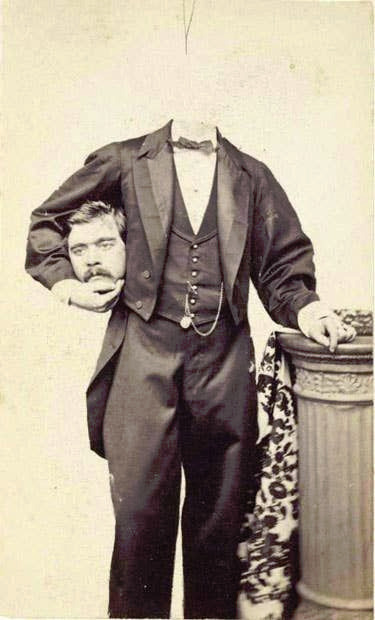
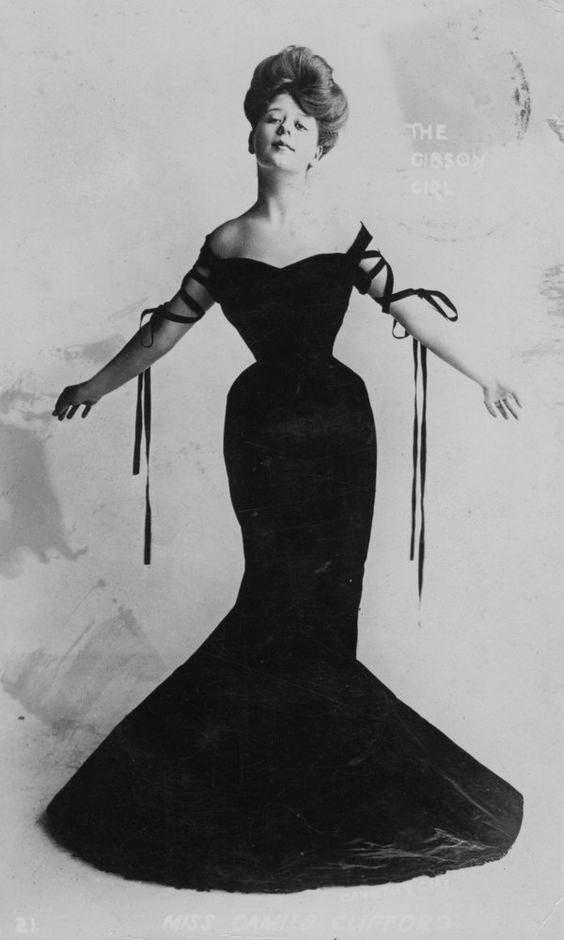
Another obvious limitation for early photography is that it didn't have colors, so popular colors of a given time period and given styles have to be found through other means. A great thing about photography though was that compared to painting, it was relatively cheap, and therefore a lot of lower class people were able to photograph themselves. We even get people outside in everyday situations not posing.
Photography can be found with search engines like google and pinterest, though they should be always sourced then. You sometimes come across very Victorian looking photos that are actually just modern photos that are well edited. And also it's important to date the photos, which might not be easily with photos just randomly floating in the internet. Libraries and museums sometimes have good digital collections of old photos. For example:
Digital collections of New York Public Library (NYPL) - It has a wide variety of collections including photography, fashion plates and other illustrations. I haven't found a great way to search through the collections, but the best way I've come up with is to search images within the Clothing & Dress topic, put some limiting filters, then click some right looking image and then go to the collection it was from. I bet there's an easier way but I haven't figured it out.
Paintings
A great thing about paintings and statues is that they date basically through whole history of organized civilizations. Paintings are more delicate so even with murals in antiquity, you'll get more surviving status from that time period. But because of the strong artistic interpretation inherent to these art forms, there's some tricky parts to them as sources for historical fashions.
You'll find a lot of paintings by just searching for fashion or paintings of a given period in google and pinterest, but it's sometimes tricky to source them to figure out where and when they were painted. Therefore I often check from Wikipedia a list of artists from a given time and place, and search their paintings from digital archives of museums. It also helps when you choose artists who were specialised in specific type of paintings. What kind of paintings depends on what you're researching and the time period.
Portraits are of course great sources. They depict the actual clothing an actual person wore and if the person was historically important enough you can find out who they were and gain a lot of context for the clothing. However, they are usually all rich people, though not always. Another thing to keep in mind is that sometimes portraits portray the subject in a costume. This became a pretty big trend among nobles in 18th century. They had costume parties and would have their portrait painted with their costume, but also there were trends of costume that were not even worn for parties, but only for having a portrait. Sometimes the painting would be painted like a scene and not like traditional portrait. Van Dyke costume (first picture below) in first half of 18th century paintings is one such example. It referred to mid 17th century fashion that was seen as timeless at the time. Peasant costume (second picture below) is another example of a popular costume for nobles to wear in portraits. Costume balls continued to 19th century, but after the popularization of camera they were mainly photographed. People would continue to dress up in costumes for portraits, but it wasn't as big of a trend as in 18th century.
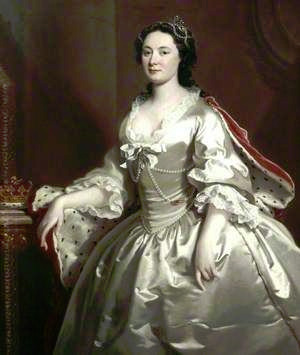

Genre paintings were a genre of paintings that became popular first in 16th century Low Countries and then In Netherlands/Belgium area during the Dutch Golden Age (from late 16th century and thorough Baroque) and during Baroque's popularity all over Europe. Genre paintings depict normal everyday life of peasants, working class people and the bourgeois. During Baroque they often had elements of idealization, symbolism and even sexualization of the subjects, so they should be taken with a grain of salt, but they do usually depict accurately the clothes the people wore. Rococo era had a lot of these types of everyday scenes about the upper class. During the Romantic era peasants were heavily romanticized in genre paintings, but there was also a lot of genre paintings of bourgeois thorough 19th century that was wasn't as strongly romanticized. These scenes were sometimes also depicted in portrait form. Realism brought another interest into the genre and Realistic genre paintings often focused on the working class. They did the opposite of romanticism though and often exaggerated their subjects to look more wretched.
History paintings depict events and scenes that were for the time historical too. They became very popular in 19th century, when Historism was the dominant in arts, but they have existed long before. There's even some from late Medieval period, and in those earlier history paintings, the historical figures are usually depicted in contemporary clothing and there's no attempt at recreating historical styles. In later periods, especially during 19th century Historism they very much tried to recreate historical styles. This is why it's important to always source paintings. I've too often seen Victorian paintings used as images for Medieval fashions.
Religious paintings have sometimes a bit of the same issue. They were very popular during Medieval and Renaissance eras, and usually the biblical figures would be depicted in contemporary fashions, though not always, sometimes in vaguely "biblical garbs". Religious paintings also have the issue of often being highly symbolic, so sometimes the characters in them are not dressed for the situation, or a character that in the biblical canon very poor is depicted in upper class contemporary fashions.
Illuminated manuscripts
Medieval manuscripts with illustrations are invaluable sources for Medieval fashions. They are usually commissioned by royalty and detail historical narratives, so they mostly depict royalty and nobility, but some illustrated scenes depict commoners too. You often find images of the illustrations floating around in pinterest but they can be hard to source when the source is not linked (which is quite often). The illustrations can be spotted by the quite consistent style (though sometimes they are not from illuminated manuscripts but some other rarer illustrations like playing cards).
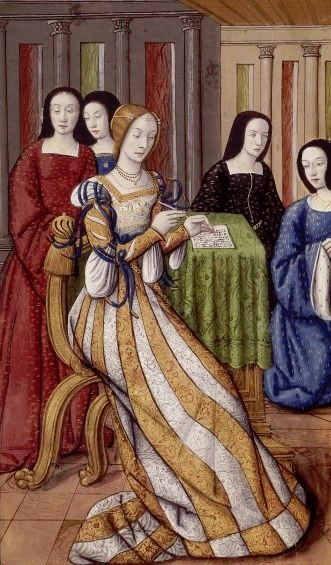

A lot of illuminated manuscripts have been digitized and British and French libraries have quite extensive online collections of them which are linked below. The manuscrips in those are mostly English and French of course but there's manuscrips from other places in Europe too, I've seen quite a lot of the German speaking area especially.
The Bibliothèque nationale de France (BnF)
The British Library
Fashion plates
Fashion plates became a thing in 1780s, so they are not useful for periods before that. They are basically illustrations that show the latest trends and they were published in fashion magazines. They don't reflect the way everyone dressed, since as they did show the latest high fashion and the people who would be wearing that were mostly young rich fashionable people. However, fashion at the time had a little different meaning than today as it was linked to dress code, and to be respectable you needed to follow fashion. So everyone, even working class people, would follow the new trends to an extent. This is especially true when we get to Victorian era, when mass industrial mass production and the emerging middle class made clothing cheaper and more available to more people. They wouldn't maybe follow every new trend or with every detail and with as much extravaganza or with the most expensive fashionable materials.
While the fashion plates didn't necessarily depict specific existing clothing, they were based on existing clothing and they were often used as guides for dressmakers. Kinda like you might go to a hairdresser with a picture of a famous person's hair or hairdressers sometimes use pictures of famous person's hair to show what they might do. And the people who might not afford something as extravagant as shown in a fashion plate, might still show it as a guide and get a simpler version of it made for them. People of the middle and lower classes especially would also use them as guides to sew themselves fashionable clothing.
Fashion plates are quite easily found on the internet, but as with other things, if you don't go straight to some organized archive, it might be really hard to date them accurately. Many bigger museums and libraries have fashion plates in their online archives, for example NYPL which I mentioned earlier.
MET Fashion Plate Collection - This is a pretty extensive collection.
Regional costume illustrations
When genre paintings became popular, artists didn't necessarily have the change to go and see what peasants wore in the places they were setting their genre paintings in, but because the whole point of them was to depict authentic real life, there was a need for illustrations of regional dress around Europe. And some artists would travel and create costume collections for resource to other artists. These are really invaluable to us today, though they should always be taken with a grain of salt, because sometimes the artists who created these drew dresses for places they never had even been in. For example some of these collections include non-European dress and they should all be probably disregarded as fantasy costumes basically. You can usually assume that the closer the region which dress they depict is to their own place of origin, the more accurate and based on reality it is. It's also good to try and google the artist and see if you can find information of where they actually traveled, because sometimes we know that pretty well.
These collections can also be found in the digitized archives of big museums and libraries, again there's some in NYPL collections.
British Museum's collections by Hippolyte Lacomte from 19th century
A collection from late 16th century on BnF archives
Honorable mentions
There's many other primary sources in different periods that can be helpful, but the ones I've mentioned are the major ones and easiest to access, when you're not doing academic research with institutional resources. I thought I might mention couple of other sources that have become handy to me as examples.
Magazine and news paper ads became wide spread in the Victorian era and from that onward is a great source. They advertise specifically ready-made clothing, so clothing that was much more available to a regular person and therefore can be really helpful to understand what a regular person might wear. I don't know a great source for them though. Many libraries have digitized old papers and magazines so going through fashion magazines is perhaps the best bet, but it's definitely a lot of combing though. Some people have though gathered ads in blogs.
Satiric comics can be surprisingly helpful for researching sort of alternative styles and seeing what trends garnered backlash. For example I've long been obsessed with Aestheticism and the other counter-cultural movements related to it, and there's quite a lot of women's Aesthetic extant garments, photos and paintings available, but very little of men's Aesthetic fashion. But then I found that Punch Magazine (conservative satire magazine) loved mocking the Aesthetes and therefore drew a lot of comics with men in Aesthetic fashion. Caution should be taken though since satiric illustrations do often exaggerate for comedic effect. For example the idea that 1770s ladies made ships out of their massive hair comes from a satiric illustration mocking the large and elaborate hair of the time.
Runaway ads of slaves and indentured servants are bleak, but can be helpful source for the clothing of poor people during 18th century. This is specific to US, but because of the colonialism poor people there would often wear at least similar clothing as those in Europe, especially Britain and France, which had the most colonial presence in that region. The clothes were described in great detail in these ads for identification purposes. These runaway ads can be also found in news papers of the era, many of which are digitized in archives of bigger US libraries, but it's definitely even more combing through. Though again some people have done some of that work already and documented it in blogs.
190 notes
·
View notes
Text
Louis XV's royal clutter

Castles opened to the public tend to put a great emphasis on furnitures, paintings and panellings. This focus often occurs at the expense of smaller every day items, such as tools, services, boxes and so on.
Even as far back as the 18th century, inventories of the garde meuble- the administration in charge of the French royal furnitures and collections- often omitted those smaller items, in favour of a greater focus on the furnitures themselves.
Several exception that that rule do exist for instance :
When King Louis XV died the 10th of May 1774 in Versailles, his Versailles private cabinets were opened and searched, all the cash and the precious items contained in his cupboards were listed and described in an inventory made 27 days after his death.
Said inventory isn't located in the documents of the House of King(O1 series of the french national archives) like it is usually the case, but in the King's papers, namely in the K series of the national archives, more specifically the K 153.
The document in question was never published nor translated to this date.
I decided to publish it for the first time and translate it entirely to give an idea of the of the kind of clutter that was present in the king's private cabinets in Versailles at the time of his death :
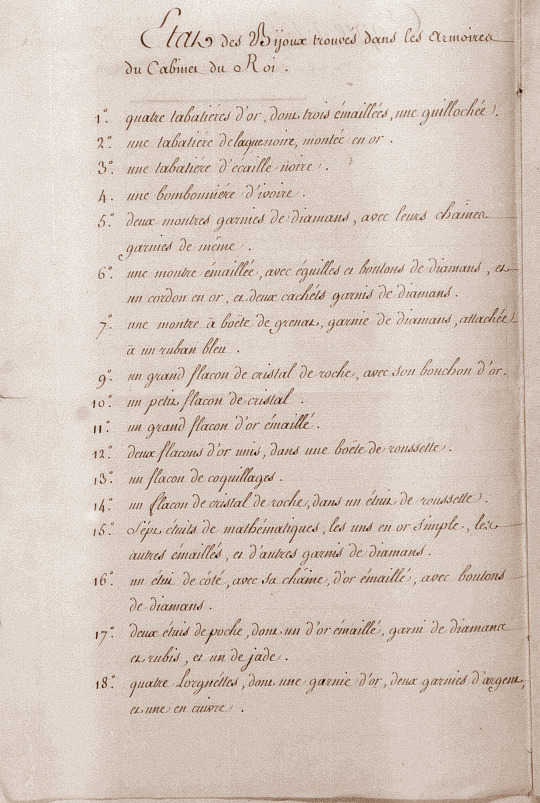
Here is the translation of the provided text into English:
1: Four gold snuffboxes, three enameled, one guilloché,
2: A black lacquer snuffbox mounted in gold,
3: A snuffbox of black tortoiseshell.
4: An ivory candy box.
5: Two watches encrusted with diamonds with their chains also adorned with diamonds
6: An enameled watch with diamond hands and button, a gold cord, and two seals encrusted with diamonds,
7: A garnet box watch adorned with diamonds, attached with a blue ribbon,
9: A large rock crystal flask with a gold stopper, and two seals encrusted with diamonds
10: A small crystal flask
11: A large enameled gold flask
12: Two plain gold flasks in a roussette box
13: A shell flask
14: A rock crystal flask in a roussette case
15: Seven math instrument cases, some in plain gold, others enameled, and some encrusted with diamonds
16: A side case with an enameled gold chain but with diamond buttons
17: Two pocket cases, one enameled gold adorned with diamonds and rubies, and one in jade
18: Four lorgnettes - two in gold, two in silver, and one in copper

19: Two pencil cases, one enameled gold adorned with diamonds, the other containing a compass
20: A Baradel in gold
21: A small portable silver barometer
22: Four tablets in gold, lacquer, or Burgos, one of tortoiseshell with diamond cyphers
23: Three souvenirs, one of enameled gold
24: A hunting knife with a gold handle
25: A dog collar with diamond initials.
26: A large lacquer tablet containing eight portraits of the royal family adorned in gold
27: A lacquer tablet with a portrait inside
28: Four portraits in three plain boxes
29: An ivory barrel adorned with gold
30: A piece of jade from the Amazon River
31: A Sèvres porcelain lorgnette
32: A gold and Magellan telescope
33: A porcelain Sèvres eyewash basin
34: A small red leather writing set adorned with gold, with a gold seal and pencil
35: A damask pruning knife
36: A double-bladed mother-of-pearl knife with a gold fleur-de-lys
37: Three glasses cases, one of tortoiseshell adorned with gold
38: An approaching eyeglass adorned with silver
39: A watch with its chain and seals, all in rubies and diamonds
41: A mathematics case in yellow lacquer with diamond buttons

42: Two almanacs mounted in silver and marcasites in their roussette cases
45: Three seals, two in gold, one in stone
47: Four rings, three with diamonds or coloured stones, one with an engraved stone
48: An English lorgnette
49: Four canes - one with a gold handle, one with a porcelain crutch, one with a gold apple adorned with diamonds, one with a golden apple-wood handle and parasol
50: Six watches - one in gold, enameled with a steel chain and chime, two other enameled, three other guilloché gold
51: A steel mirror
52: A gold egg cup in a roussette case
53: A gold writing set with Charlier paintings, in miniature in a roussette case
54: A very beautiful crystal vase, measuring 9 inches in height
55: A gold breakfast set consisting of a Sevres porcelain tray, two identical cups, a gold teapot and sugar pot, two spoons, a strainer, and a sugar tong made of the same metal
56: A gold-enameled punch pot with a pump, and a second pot of Saxony porcelain
57: A small enameled gold punch pot with a pump and a crystal basin
58: Two gold-enameled candlesticks with their bobeches
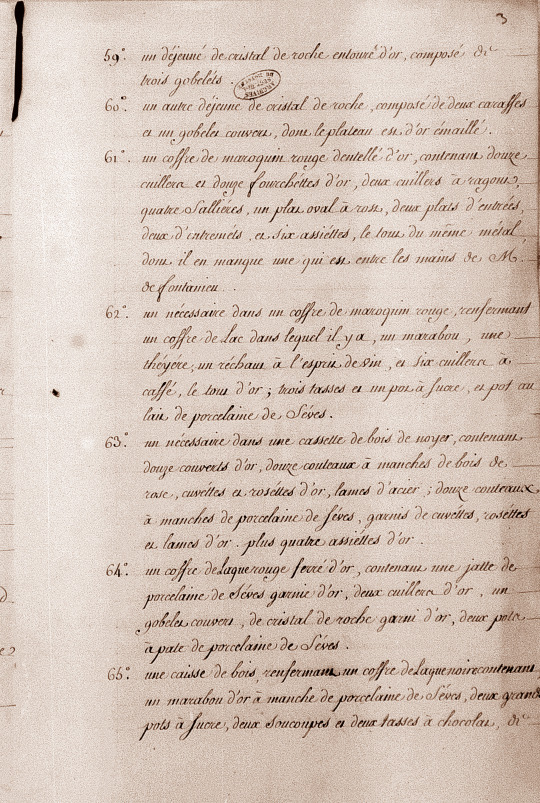
59: A crystal breakfast set surrounded by gold, consisting of three goblets
60: Another crystal breakfast set consisting of two carafes and a covered goblet, with the tray of enameled gold
61: A red leather box, edged with gold, containing 12 gold spoons and 12 gold forks, two roast oval plates, two appetizer plates, two dessert plates, and six dishes, all made of the same metal, with one missing, which is in the possession of Mr. de Fontanieu.
62: A set in a red leather box containing a lacquer box with a marabout, a teapot, a spirit lamp, six coffee spoons, all made of gold, three cups, a sugar pot, and a milk jug made of Sevres porcelain
63: A set in a walnut wood box containing 12 gold tableware, twelve knives with rosewood handles, gold cup and rosette, steel blades, twelve knives with Sevres porcelain handles adorned with cup rosette landau, plus four gold plates
64: A red lacquer box reinforced with gold, containing a Sevres porcelain bowl adorned with gold, two gold spoons, a covered crystal goblet adorned with gold, two porcelain pasta pots from Sevres
65: A wooden case enclosed in a black lacquer box containing a marabout made of gold with handles made of Sevres porcelain, two large sugar pots, two saucers, and two chocolate cups made of porcelain, a spirit lamp, adorned with gold, a square crystal flask adorned with gold, two coffee spoons, and a large gold spoon

66: A gold-plated copper microscope in its pyramid case
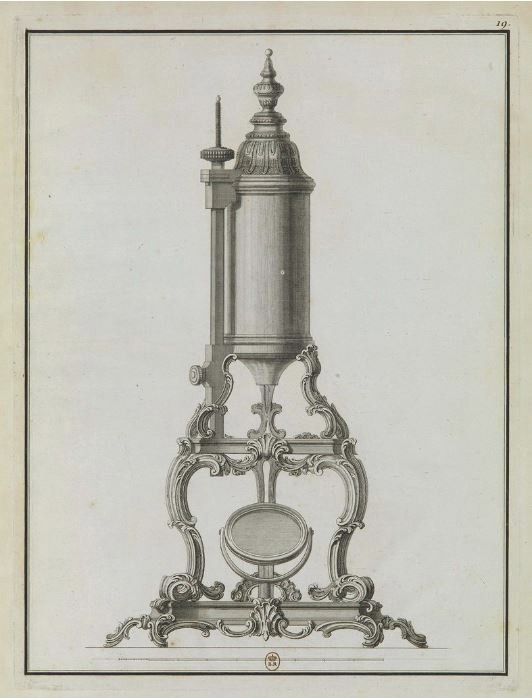
Dom Noël, Planche 19 Microscope tripode.
67: A writing set with 12 zodiac signs
68: A wooden box reinforced with silver containing a pharmacy adorned with silver
69: A yellow lacquer box enclosed in a red leather box
70: A graphometer in a red leather case
71: A gold compass with its stand and a level in a sharkskin case
72: A black lacquer box
73: A breakfast set consisting of a painted sheet metal tray and two porcelain cups
74: A writing set made of silver-reinforced roussette
75: Supplementary gold tableware, three coffee spoons, one tea spoon, a gold set in a roussette case
76: A small black lacquer box
77: A small oak chest, we weren't able to find the key
78: A box of tools with wooden handles and silver ferrules
79: A box of Kingswood,but the key wasn't found
80: A gold-braided telescope
81: A coffee pot for four gold cups with jasper handles and six gold coffee spoons, in a leather case made to contain 12.
#historical research#historical#history#rococo#18th century#Versailles#louis xv of france#Louis XV#palace of versailles
56 notes
·
View notes
Text
(Please reblog this for SCIENCE so that I can get better data)
25 notes
·
View notes
Text
youtube
Hello, friends! I did a lecture last month at Cartoon Crossroads on doing reference for historically-set stories and adapting that reference into costumes that further your narrative. If you think that sort of thing'd be helpful to you, well, the CXC folks have posted a video of the talk!
#historical fiction#historical costuming#historical illustration#historical costume design#costume design#character design#historical character design#historical research#historical reference#Youtube
27 notes
·
View notes
Text
Ever wondered how women in the 1860's wore those huge skirts in wet/muddy weather??

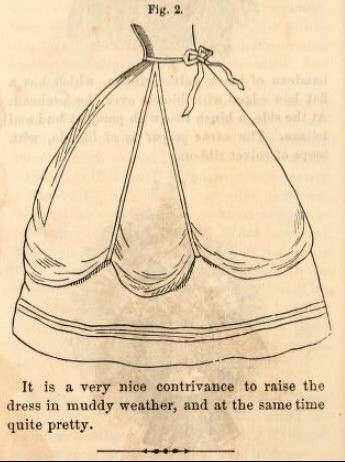
Our Victorian ancestors really were quite ingenious!
~'The Page' from Godey's Lady's Book, 1862
#victorian#victorian fashion#victorian clothing#1860s#1860s fashion#historical research#historical clothes#history#historical#research#perfectlittleparcel
10 notes
·
View notes
Text
Fitzjames' journal
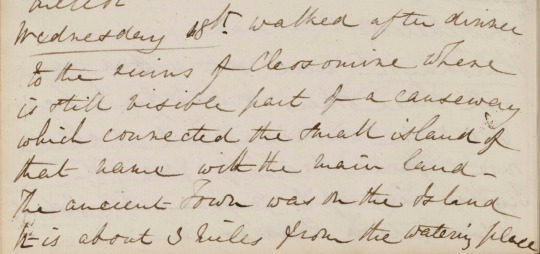
Fitzjames: "Wednesday 18th [Dec 1833] Walked after dinner to the ruins of Cleosomine"
The actual name of the ruins is Clazomenae or Klazomenai in Turkey. I want to publish his journal and am currently writing the footnotes. Figuring out the correct or present-day names is tricky sometimes, but I manage it in the end!
[1833-34 journal, NMM]
29 notes
·
View notes
Text
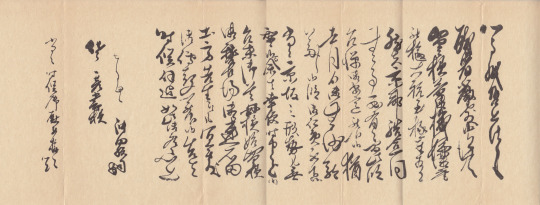


I finally had a chance to scan this set of letters written by Okita Soji. These are reprints published alongside a small booklet with transcripts and information, not originals, but they are absolutely enormous and needed to be scanned in sections, which is why I've been putting it off.
The bottom image is Soji's New Year's card to Kojima Shikanosuke, using his absolutely neatest possible handwriting. That's quite a contrast to Soji's normal handwriting seen in the two letters above it, both of which were written to Sato Hikogoro. The long letter in the center is the one where he talks about Sannan's death.
If you want larger versions of the letters, or scans of the booklet, they're in my Dropbox.
#history research#history reference#historical research#historical reference#okita soji#letters#edo period letters#okita soji's letters#kojima shikanosuke#sato hikogoro
94 notes
·
View notes
Text
My research process for Be Still My Soul
I was asked about my research for Be Still My Soul (GO human au fanfic set in Finnish history. It has also its own blog @be-still-my-soul-fanfic for extra notes and background info), and I was so excited for a reason to babble about my process! Thank you for asking <3
The question was this:
Can I ask what your research process is? How long you’re willing to spend on it and then separating things you’ve discovered while interesting might not be right for the story you’re telling
The quick answer to "how long you're willing to spend on it" is always "way too much", truly ridiculous amounts! But I was also building on a foundation of existing knowledge.
I have no degrees on history, but we learned the basics of all this at school. I also loved to listen my grandparents stories of the olden times as a kid; not necessarily about the war, but farming, customs and architecture. My proper interest in the civil war period began in 2018, during the 100th anniversary year. There were a lot of events, articles and news about the war, so I decided to read some of them, including old classics, and visit some museums. When I stumbled upon a reference I didn't understand, I read more, and that was a whole rabbit hole... But! When I started outlining Be Still, I was able to base it on a lot of knowledge I already had, and was able to add the big beats of the love story to the real historical timeline.
Then I started writing. I took a scene or a short period I had outlined and started to ask myself questions. What needs to be shown for the reader to understand the next big beat. What do the characters know, what do they see, what do they think. I always started my research from something related to the outline BUT it definitely got off track and severely out of hand so often! I found new details I could add to the story, and a whole bunch of details I hyperfixated in, researched for days---and used only maybe in one offhand paragraph.
I left so much out, because it was, at heart, a love story and not a history lesson. And some things made no sense to be explained in the story because they were every-day stuff for the characters! So, from the very early on I realised I needed an outlet for all that extra info in order to not clutter the story, and that's how the blog was born.
My biggest tools for research during writing were
online newspaper archives (to figure out what people actually knew and discussed at any current day I was writing about, because nowadays we of course know a lot more about the stuff that happened, than the people knew when it was actually happening. I also used newspapers to search for important information like if Vaseline was already available in 1918 Finland)
national archive's online photo archive (to get visuals of locations, clothes, houses and other things, to be able to describe them better)
Wikipedia (especially for looking for right words; I searched for a spesific thing from Finnish Wikipedia, then opened the English article to see the English word for it, and to figure out if the word is what I'm looking for. And then I went to Discord to ask around on writer's channels if the words I was about to pick were actually general knowledge for English speakers)
census data (I've also done genealogy research for my family, so I still have a subscription to some neat archives. These I used to search for names and professions, and to count amount of servants in big houses, etc)
library (I'm sure our local library thinks I'm doing some important historical research :D I read several books about other people's research, and also fiction. But I have kinda ruined the fiction for myself because I can now spot all the mistakes, and also, in one case, when the author described a scene in vivid detail, I could tell exactly which museum archive photo they had used as a reference!)
Whenever I found something I got curious about, all my other research (and writing!) stopped and I started googling more and more information, which sometimes did end up into the story, but more often did not! But I'm the sort of history geek that likes these rabbit holes, so I didn't mind much.
(Unless it felt like I got no new words into the story for weeks!)
32 notes
·
View notes
Text
Well I have decided to create a bibliography for The American Icarus: Volume I (and subsequent volumes in the series). Is TAI a piece a fiction and therefore doesn’t really need one? Yeah. Am I making this for my own satisfaction, and for the one in like a hundred people that may be curious as to what sources I used and would like to see some of the behind-the-scenes of my writing process? Yeah. But also I just love the look of full citations with hanging indents it’s just so satisfying to look at. But I’m an introverted history major so who’s surprised? No one should be.
If anybody wants to see it when completed I’d be happy to share :)

#I am such a fucking nerd help#the american icarus#TAI#amrev#alexander hamilton#writers on tumblr#american history#writing community#historical fiction#bibliophile#bibliography#amwriting#the american revolution#fiction writing#historical research#historical alexander hamilton
9 notes
·
View notes
Text
Random fun research tidbit:
I was looking up magazines from the 1890s and found a website with a bunch of scans of tons of magazines from the 1880-1899.
12 notes
·
View notes